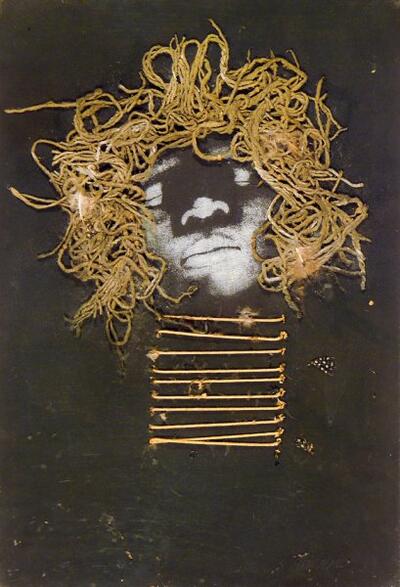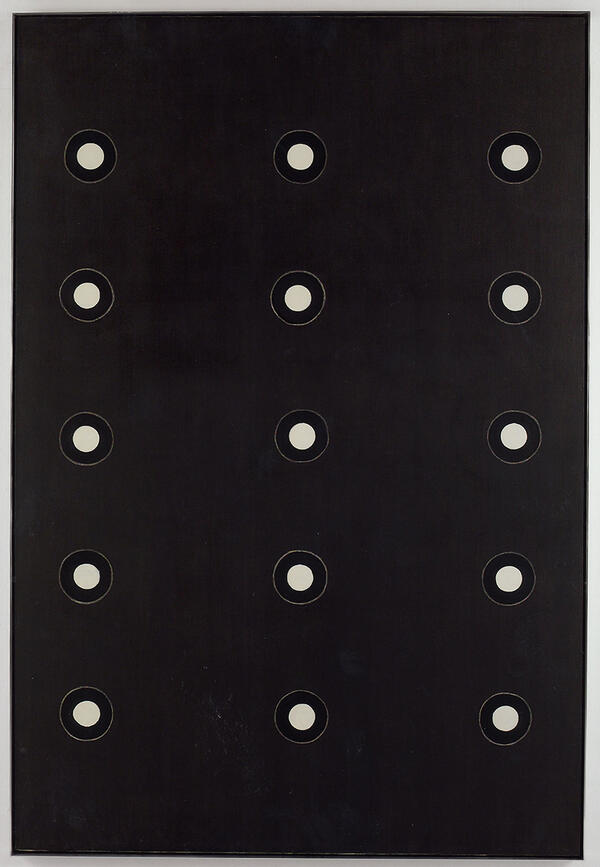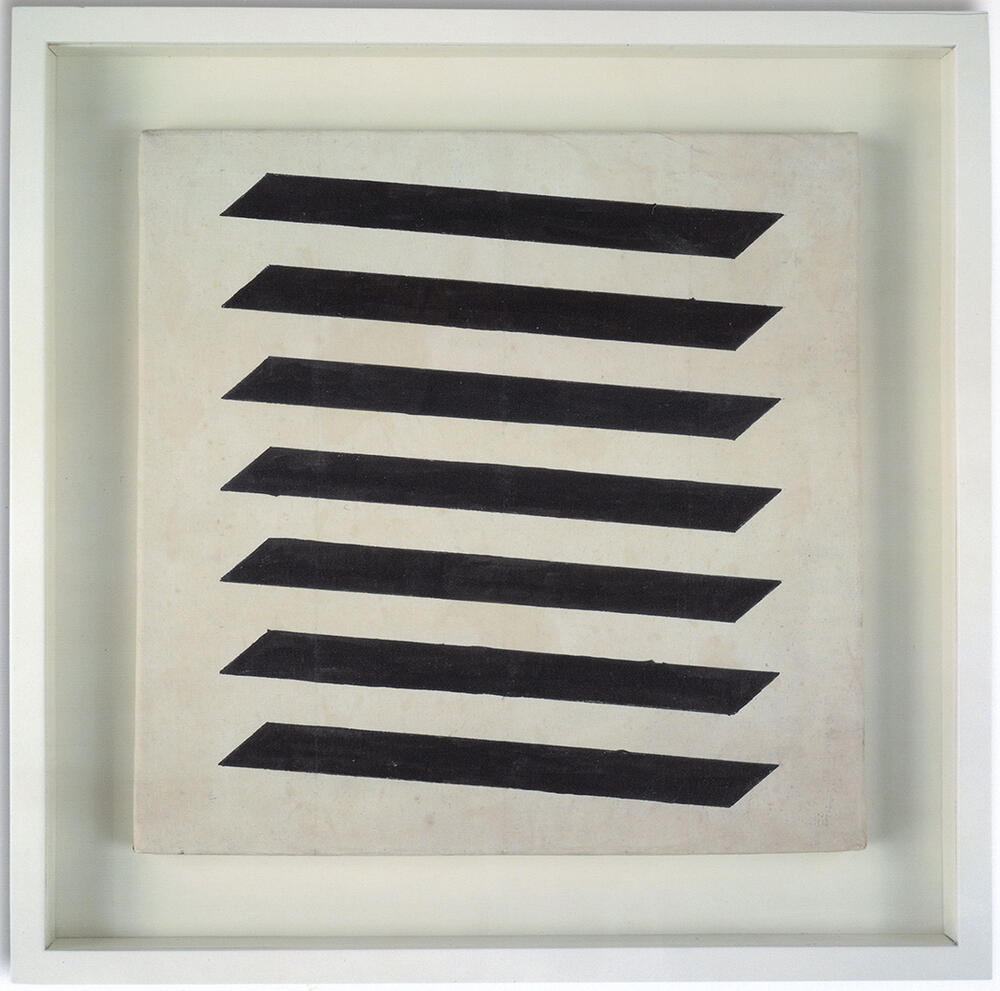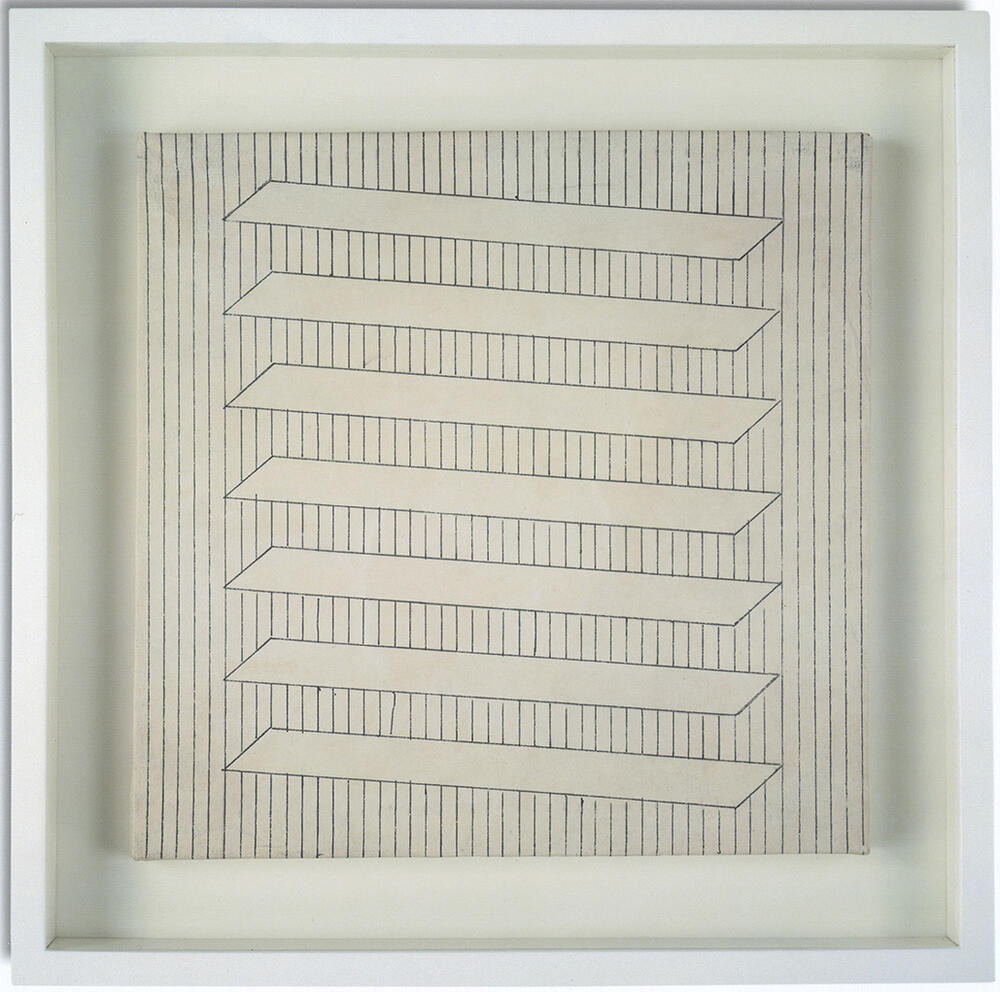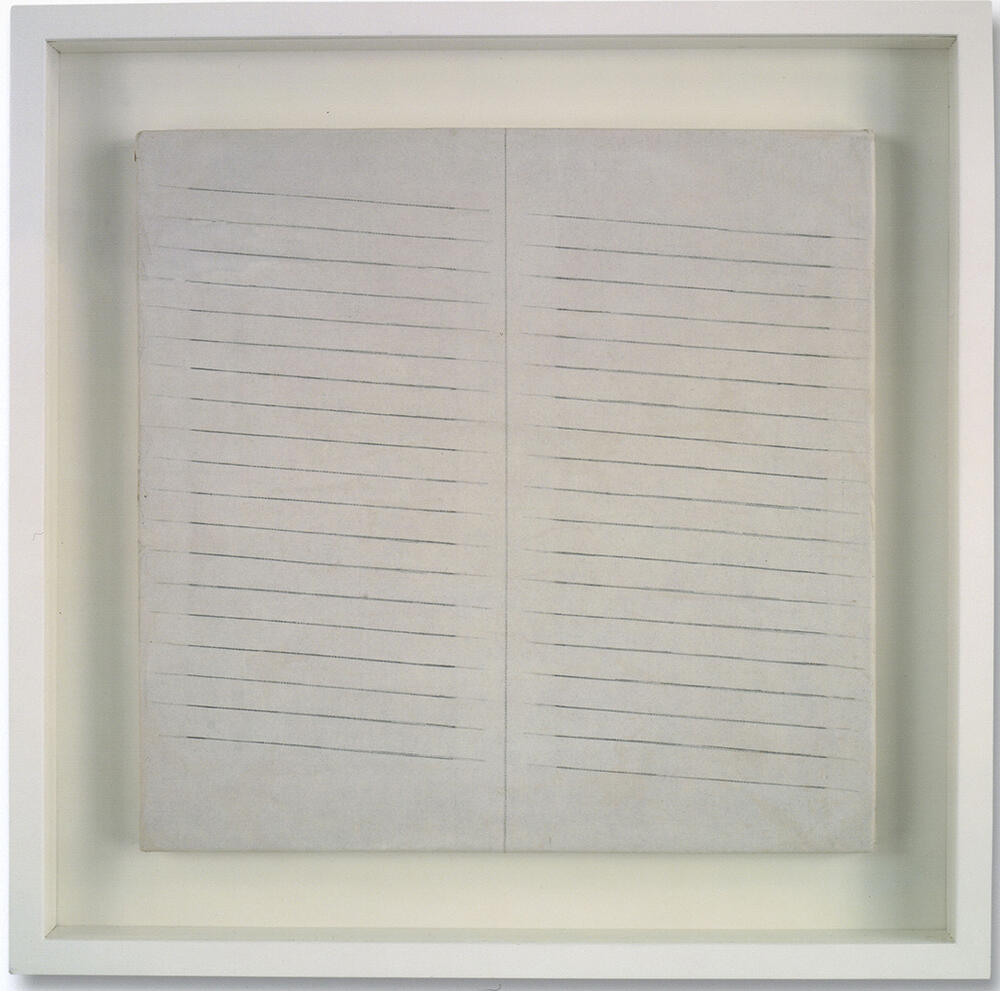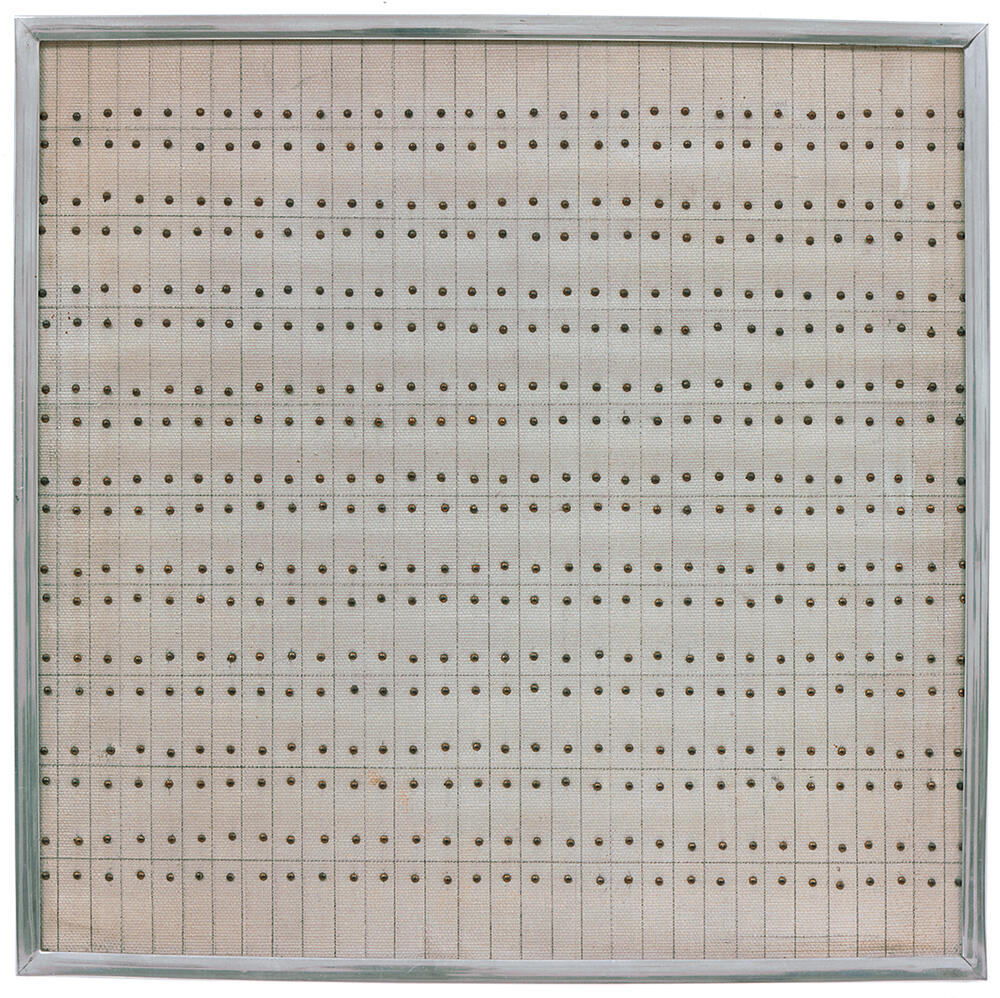Untitled
Ink on paper, mounted on canvas
12 x 11 3/4 in
When Agnes Martin moved to New York City in 1957, she decided to devote herself entirely to painting. She was 45 years old at the time. She reinvented her visual vocabulary by abandoning her previous biomorphic abstractions and focusing on exploring simple geometric forms and on different formats of grid structures. She covered her canvases with orthogonal lines applied at regular intervals, thereby neutralising any compositional principles. “My paintings do not have any subject, space, or line, or anything else. There is no form”, she stated in 1966. “They are made of light and luminosity. They talk about a fusion, what is without form, about the dissolution of form”.* Martin may not have been the first artist to use grids, a modernist form par excellence, but she was the only one to use them systematically in a standard, square format that sublimated the irregularities and tremors of the human gesture in their pursuit of a deeply spiritual perfection.
Martin's non-referential images are inspired by various forms of Eastern spirituality, such as Zen Buddhism and Taoism, as is the case with this work on paper covered with a very tight weave. As in a mantra, Martin works with the repetition of regular patterns. This approach strives to visualise a transcendent beauty and the emotions that this elicits. The variation in thickness of the ink and the thickening of the brush produce a lightly trembling effect that dispels the rigidity and apparent anonymity of the grid structure.
The Pinault Collection showed this work for the first at the Icones exhibition at Punta della Dogana in Venice in 2023. *Ann Wilson “Linear Webs: Agnes Martin”, Art and Artists, Vol. 1, No. 7 (October 1966), p. 49

Agnes Martin, Untitled, 1960
